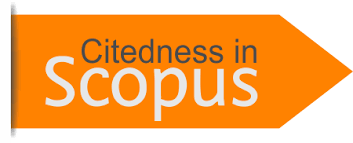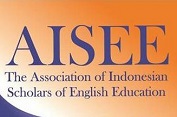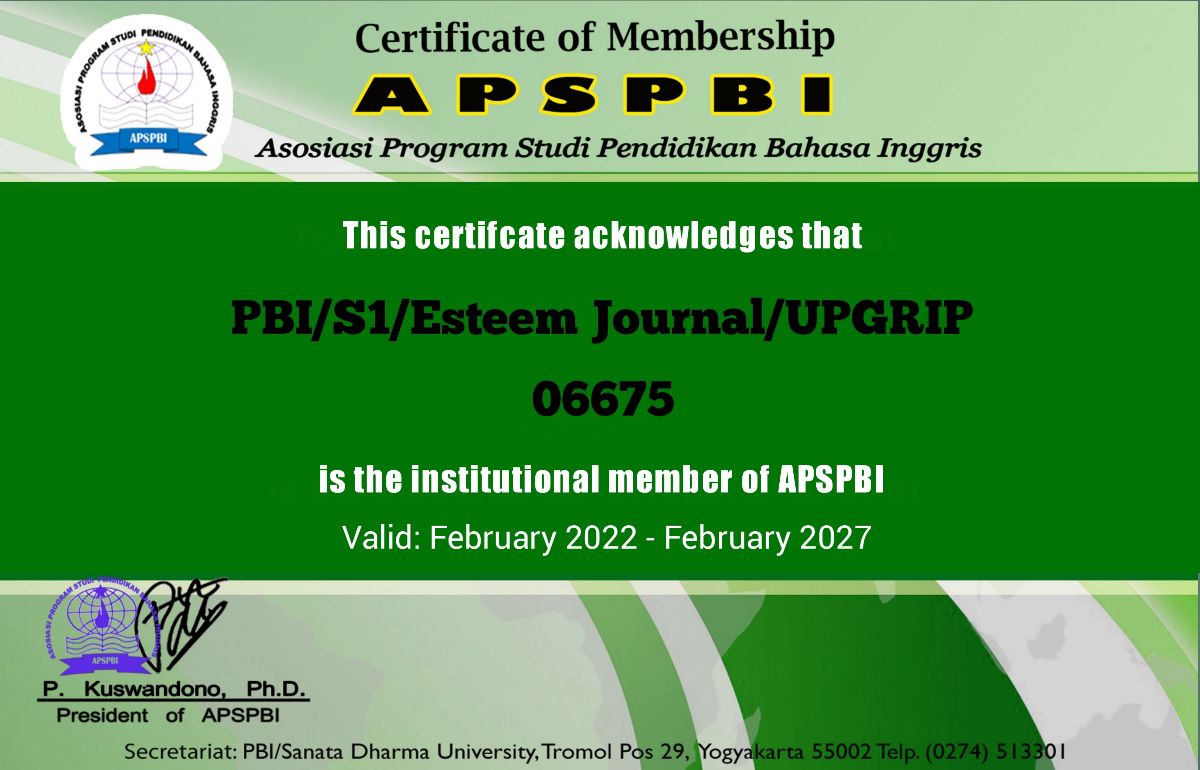The Influence of Interactive Strategy and Student Motivation on Reading Comprehension ability of the Eighth grade Students of State Junior High School 3 of Rambang Dangku
DOI:
https://doi.org/10.31851/esteem.v4i2.6207Keywords:
intertactive, strategy, Technique.Abstract
This research was concerned with the The Influence of Interactive Strategy and Student Motivation on Reading Comprehension ability of the Eighth grade Students of State Junior High School 3 of Rambang Dangkuâ€. In this study 60 students of Eight grade students of SMPN 3 Rambang Dangku in the academic year 2020/2021 were chosen as samples by means of two stage random sampling. This study applied factorial research design. The data were collected by using questionaire and test. The data were analyzed by using Paired Sample t-test, Independent Sample t-test, and Two-Way ANOVA. The results showed that, first, there was a significant influence in students’ reading comprehension taught by using intertactive strategy technique. Second, there was not any significant influence in students’ reading comprehension taught by conventional teaching technique. Third, there was significant influence in students’ reading comprehension students who have high and low learning motivation by using intertactive strategy technique and conventional teaching technique. Last, there is not any significant interaction effects of motivation on students’ narrative text comprehension taught by using intertactive strategy technique and learning motivation towards the students’ reading comprehension of SMPN 3 Rambang Dangku. So, intertactive strategy technique was effective for students who have high and low learning motivation.
References
Arikunto, S. 2013. Prosedur Penelitian. Jakarta: Rineka Cipta.
Berry, James H. (2005). Levels of Reading Comprehension. Accessed from: jberry@sc4.edu.on Monday, 5 November 2018.
Brown, H. Douglas. 2001. Teaching by Principles: An interactive Approach To language Pedagogy. Second Edition. New York: Longman.
Brummit, & Yale, J. (2008). An article:
What is Reading Comprehension?. Accessed from http://EzineArticles.com/?expert=C yn thia_Joffrion. On Monday,
Fraenkel et al. 2012.How to Design and Evaluate Research in Education. New York: Mcgraw Hall, Inc.
Nuralisah. 2017. The Influence of
Running Dictation Technique towards Students’ Descriptive Writing Ability at The First Semester of The Eight Grade of SMP Negeri 1 west Kota Agung in the Academic Year 2017/2018. TheUnpublished Thesis. Tarbiyah and Teacher Training Faculty, Raden Intan State Islamic University Lampung.
Oliver, J., & Boyd, R. (1986). Reading Comprehension its Nature and Development; Encyclopedia of Language and Literacy and Literacy Development (pp. 1-8).
Ritho. Robinson. 2015. The Influence of Student Motivation on Academic Performance in Public Secondary Schools in Dagoreti Subcounty, Nairobi, Kenya. A Research Project Report of The Requirement for The Award of post graduate Diploma in Education of The University of nairobi.
Ruslaini. Dia. 2018. The Influence of Jig Saw Technique and Learning Motivation
towards The Tenth Grade Students’ Reading Comprehension to State Senior High School 2 Muara beliti.
Simaibang, Baginda. 2017. English Language Teaching in a Foreign Situation. Palembang: CV Citrabooks Indonesia.
Snider, V.E.L. (1989). Reading Comprehension Performance of Adolescents with Learning Disability. Learning Disability Quarterly, 12, 87-96.
Zwiers, Jeff. (2004). Building Reading Comprehension Habits in Grade 6-12. Menco. Park Califor.
Downloads
Published
Issue
Section
License
Copyright Notice
Authors who publish with this journal agree to the following terms:
In order to assure the highest standards for published articles, a peer review policy is applied. In pursue of the compliance with academic standards, all parties involved in the publishing process (the authors, the editors and the editorial board and the reviewers) agree to meet the responsibilities stated below in accordance to the Journal publication ethics and malpractice statement.
Duties of Authors:
- The author(s) warrant that the submitted article is an original work, which has not been previously published, and that they have obtained an agreement from any co-author(s) prior to the manuscript’s submission;
- The author(s) should not submit articles describing essentially the same research to more than one journal;
- The authors(s) make certain that the manuscript meets the terms of the Manuscript Submission Guideline regarding appropriate academic citation and that no copyright infringement occurs;
- The authors(s) should inform the editors about any conflict of interests and report any errors they subsequently, discover in their manuscript.
Duties of Editors and the Editorial Board:
- The editors, together with the editorial board, are responsible for deciding upon the publication or rejection of the submitted manuscripts based only on their originality, significance, and relevance to the domains of the journal;
- The editors evaluate the manuscripts compliance with academic criteria, the domains of the journal and the guidelines;
- The editors must at all times respect the confidentiality of any information pertaining to the submitted manuscripts;
- The editors assign the review of each manuscript to two reviewers chosen according to their domains of expertise. The editors must take into account any conflict of interest reported by the authors and the reviewers.
- The editors must ensure that the comments and recommendations of the reviewers are sent to the author(s) in due time and that the manuscripts are returned to the editors, who take the final decision to publish them or not.
Authors are permitted and encouraged to post online a pre-publication manuscript (but not the Publisher final formatted PDF version of the Work) in institutional repositories or on their Websites prior to and during the submission process, as it can lead to productive exchanges, as well as earlier and greater citation of published work (see The Effect of Open Access). Any such posting made before acceptance and publication of the Work shall be updated upon publication to include a reference to the Publisher-assigned DOI (Digital Object Identifier) and a link to the online abstract for the final published Work in the Journal.





























